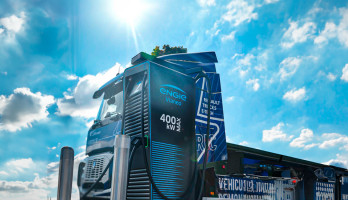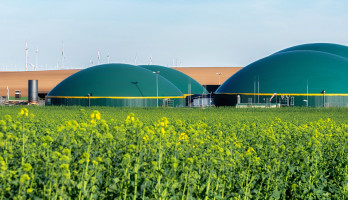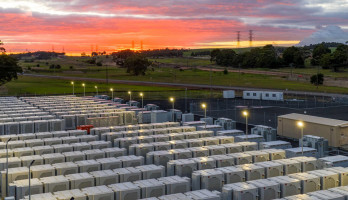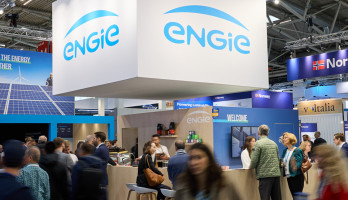
Battery storage: Why the expansion will determine the electricity market of the future
Everyone knows that renewable energies are key players in the electricity system of the future. What is less well known is that enormous storage capacities are required for a successful energy transition. The real demand is immense and the expansion must take place quickly. What does this mean for the storage market? This article in our Zero Carbon Magazine looks at the facts for you and explains why everyone will soon be talking about battery storage.
Background: The transformation of the electricity system
A few decades ago, the electricity supply in Germany was still simple: Large power stations used to supply the country with energy. The electricity system was centralised and clearly structured. Today, the picture is completely different: the liberalisation of the energy markets has made the issue of electricity much more complex. The country is now subject to a decentralised system - energy is generated and consumed in many small and large places in Germany.
Open markets and decentralised structures are a great thing. However, the energy transition poses immense challenges for the liberalised electricity system. The renewable energy sources that the energy sector in Germany is switching to are neither flexible nor available across the board or at any time. Coal was available at all times and could be converted into electricity around the clock. However, energy from photovoltaic systems is only available when the sun is shining. What's more, the large wind farms on Germany's coasts reliably generate a lot of energy, albeit more than can be consumed in the north. In the south and west, on the other hand, with their numerous industrial sites, the demand for green electricity is increasing.
A new energy reality: battery storage creates the necessary flexibility
The expansion of renewables is one of the top issues in the public eye. Whether solar panels or wind turbines - the addition of new power generation plants is only one side of the medal. The demands on the transmission grids are also growing. In future, some energy will have to be transported over long distances. In addition, more flexibility in the grids is essential to compensate for the weather-related availability of renewable energy sources. In economic terms, this means that the markets will inevitably become more volatile. Electricity prices fluctuate depending on current availability. Finally, the energy transition requires a transformation from a physical perspective alone. The electricity grid requires a constant frequency of 50 hertz. At times when weather conditions are unfavorable for renewable electricity production, the grids are underloaded. Conversely, the electricity grid cannot absorb a very high level of green electricity production at times.
There is only one answer to all these challenges: storage! In fact, storage technologies are real game changers for the energy transition. The idea of temporarily storing electricity is indispensable for the energy supply of the future, both from a technical and an economic point of view.
At a glance: Why battery storage is so important for the energy transition
- Security of supply: Battery storage systems store surplus electricity and make it available again when required.
- Grid stability: Battery storage systems ensure the necessary operating frequency and voltage in the electricity grid by supplying stored electricity as required.
- Grid optimisation: Battery storage systems enable a much more flexible and balanced electricity system - both technically and economically.
- Price stability: Battery storage systems reduce the volatility of the electricity market and harmonise supply and demand.
Energy storage systems are useful for the grid and make perfect economic sense. The storage operators themselves benefit from this: they can store the surplus green electricity in their systems at lunchtime and feed it back into the grid when demand and prices rise. A significant increase in storage capacities would also ensure that the industry's green electricity supply is covered at all times.
Great demand for battery storage
There is still a lot to be done in terms of storage capacities, and as quickly as possible. The challenge: there will be a considerable need for storage in Germany as early as 2030 - i.e. at the same time as the coal phase-out. Energy experts are therefore focusing on the pressing issue of storage capacities. The German transmission system operators see a high demand for additional capacity. According to the current grid development plan (NEP), depending on the future supply scenario, up to 113.4 gigawatts of additional capacity would be required in Germany in the area of PV batteries alone. Experts assume that 12 gigawatts of storage capacity would have to be covered by pumped storage power plants and up to 168 gigawatts by large and small battery storage systems for the German market.
The restructuring of the electricity system in Germany
These are hard figures that illustrate how multi-layered and complex the energy transition is in practice. After all, the construction of new pumped storage power plants in Germany is rather unlikely for numerous reasons. As a pioneer of green technologies, Germany has also committed itself to the consistent expansion of renewables. While countries such as Italy still rely on back-up storage systems using natural gas, there are few alternatives for sustainable storage concepts in Germany. What's more, the home storage market in Germany is flourishing. Although this is a welcome development, the grid operators cannot access home storage systems. This makes future demand planning and distribution in the electricity grid even more complicated.
Hydrogen will play an accompanying role in the expansion to ensure the seasonal availability of electricity. Battery storage systems, on the other hand, are the decisive lever for the storage problem - at least in Germany. Lithium-ion technology is particularly relevant in this regard. However, this is (still) comparatively expensive. Nevertheless, progress in research and development suggests that battery systems will become cheaper, more powerful, more durable, and therefore more economical in the future. It therefore remains a mammoth task to meet the growing demand for storage in Germany - but promising solutions will not be long in coming.
A prime example in the storage sector: the Pfreimd power plant group
The pumped storage power plants of the Pfreimd power plant group in the Upper Palatinate demonstrate in an innovative way how battery storage can help to ensure grid stability. The pumped storage units at the power plant operated by ENGIE have a total capacity of 137 megawatts. They are supported by a battery storage system. The duplication is in principle a precautionary measure, as the technologies are mutually reinforcing. In fact, ENGIE was the first company to successfully implement such a dual storage concept at a site. The battery storage system has a capacity of 13 megawatts - the equivalent of around 22,000 standard car batteries.
Our Expert










